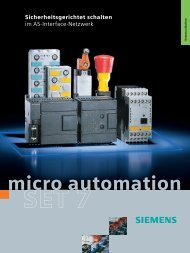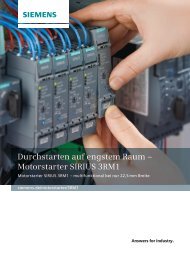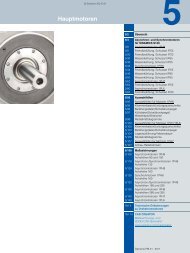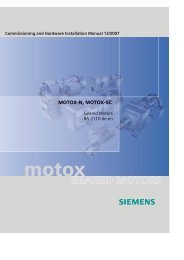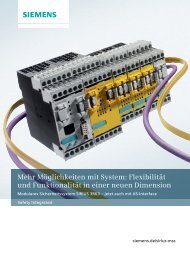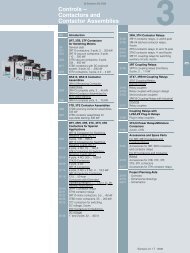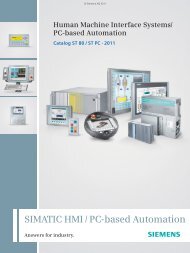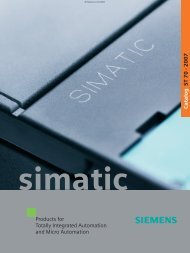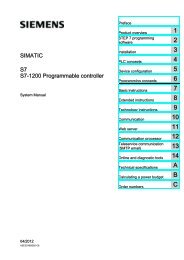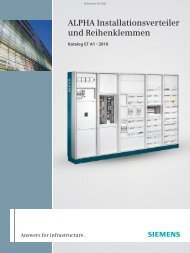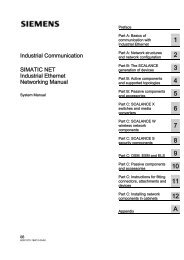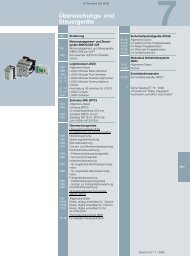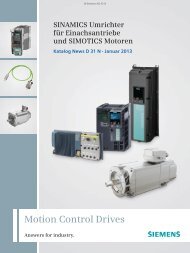DC motor - Siemens, s.r.o.
DC motor - Siemens, s.r.o.
DC motor - Siemens, s.r.o.
Create successful ePaper yourself
Turn your PDF publications into a flip-book with our unique Google optimized e-Paper software.
Note<br />
4.4 Energizing<br />
Commissioning<br />
After drying a cleaned winding, note that the insulation resistance is lower for warm<br />
windings.<br />
The insulation resistance can only be meaningfully evaluated if measurements are<br />
taken after the winding has cooled down to room temperature (20 to 30 °C).<br />
Over its operating lifetime, the <strong>motor</strong> winding insulation resistance can drop due to<br />
ambient and operational influences. The critical insulation resistance for a 25°C<br />
winding temperature can be calculated, depending on the rated voltage, by<br />
multiplying the rated voltage (kV) by the specific resistance given in the above<br />
table.<br />
e.g. critical resistance for UN = 400 V : 0.4 kV x 0.5 MΩ/kV = 0.2 MΩ<br />
If the calculated critical insulation resistance value is reached or undershot, the<br />
windings must be thoroughly cleaned and dried. If the measured value is close to<br />
the minimum value, the insulation resistance should be subsequently checked at<br />
appropriately shorter intervals.<br />
[ID 552]<br />
Recommended measures<br />
•= Start the <strong>motor</strong> briefly without any load coupled - check the direction of rotation.<br />
•= As the <strong>motor</strong> runs down, check the mechanical running for noises or vibrations<br />
in the bearings and bearing end shields.<br />
•= If there are no problems with the mechanical running, energize the <strong>motor</strong> again<br />
and run it up to maximum permissible speed (according to the rating plate).<br />
•= If it is running irregularly or emitting abnormal noises, deenergize the <strong>motor</strong> and<br />
determine the cause as it runs down.<br />
•= If the mechanical operation improves immediately after switching the <strong>motor</strong> off,<br />
then the cause is magnetic or electrical.<br />
•= If the mechanical running does not improve after deenergizing, there are<br />
mechanical causes (e.g. electrical machines out of balance, etc.).<br />
•= If the <strong>motor</strong> is running perfectly, switch on the available cooling system.<br />
•= Observe the <strong>motor</strong> for a period of time at no load.<br />
Note<br />
Shorten the energizing time accordingly if you do not intend to operate the air-towater<br />
heat exchanger in an "advance" test run.<br />
•= When the <strong>motor</strong> is running perfectly, apply a load – check smooth running.<br />
Record the values for voltage, current and output. If possible, record the<br />
corresponding values for the driven machine.<br />
SIEMENS AG T61160347010001 (DMHO V9)<br />
Operating instructions 1GG6286-0NA4.-1VV1-Z 4-5




